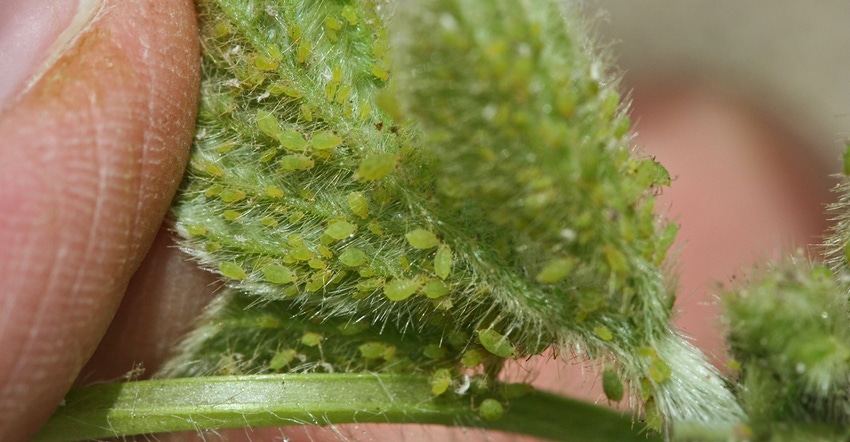May 18, 2017

The economic threshold for treating soybean aphids is still 250 aphids per plant with 80% of the plants infested and with aphid population increasing, according to Janet Knodel, North Dakota State University Extension entomologist, and Patrick Beauzay, NDSU Extension entomology research specialist and Integrated Pest Management coordinator.
Every year, some people suggest that the economic threshold should be lower. However, research and Extension demonstration plots have continued to validate the 250 economic threshold recommendations.
Here’s why, according to Beauzay and Knodel:
• Broad-spectrum insecticides will kill beneficial insects, such as lady beetle adults and larvae, and lacewing larvae. These beneficial insects can and do keep aphid numbers in check. If aphids rebound after you spray early, the beneficial insects will not be present, and aphid numbers can grow very rapidly and require a second application later in the field season.
• Residual activity of foliar insecticides is relatively short-lived and will not provide protection against late-season aphid outbreaks, which typically occur from late July through mid-August in the Dakotas. Furthermore, new leaves that have grown after an early insecticide application are not protected.
• Repeated use of the same insecticide mode of action, especially in a single growing season, can lead to insecticide resistance in soybean aphids.
• Use of pyrethroid insecticides (except bifenthrin) can cause spider mites to flare up, often resulting in additional foliar applications to control spider mites. Spider mites also have developed resistance to more than one mode of action in some areas of the Midwest, including bifenthrin and organophosphates, such as chlorpyrifos.
• Research trials conducted over several years in North Dakota and other north-central and Midwestern states have not demonstrated any economic benefit to spraying earlier than the 250 economic threshold. “You might think that adding an inexpensive insecticide to the tank during an herbicide application is cheap insurance, but really it’s just an added input cost with no demonstrated economic benefit and potentially serious biological consequences,” Knodel says.
You May Also Like




